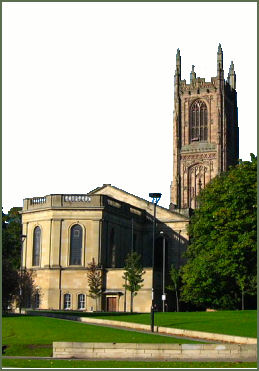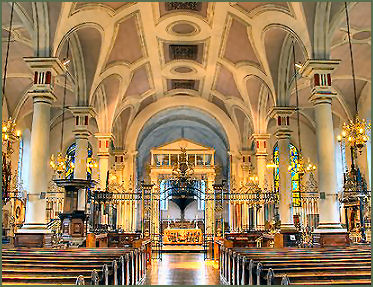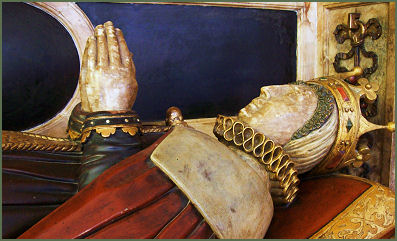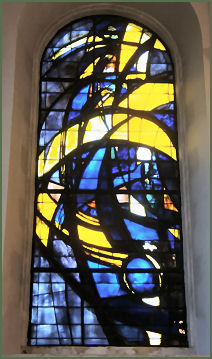Derby Cathedral
OS Grid ref:-
 Derby Cathedral or the Cathedral of All Saints, is the smallest Anglican Cathedral in England and was founded by the Saxon King Edmund I 'the Magnificent', (922 –946) in around 943 as a royal collegiate church. The church was mentioned in the Domesday Book along with five other Derby churches. It was recorded as belonging to the King, and was served by a college of seven priests. No traces of the original Anglo-Saxon structure, about which little is known, survive to the present day.
Derby Cathedral or the Cathedral of All Saints, is the smallest Anglican Cathedral in England and was founded by the Saxon King Edmund I 'the Magnificent', (922 –946) in around 943 as a royal collegiate church. The church was mentioned in the Domesday Book along with five other Derby churches. It was recorded as belonging to the King, and was served by a college of seven priests. No traces of the original Anglo-Saxon structure, about which little is known, survive to the present day.
 The current building dates from the fourteenth century, the perpendicular Gothic tower, one of the tallest medieval towers in the country, which rises to a height of 212 feet (65 metres) dates from 1510 to 1530, there are 189 steps to the roof.
The current building dates from the fourteenth century, the perpendicular Gothic tower, one of the tallest medieval towers in the country, which rises to a height of 212 feet (65 metres) dates from 1510 to 1530, there are 189 steps to the roof.
Apart from the tower, the building was demolished and rebuilt in a classical style in 1725, the builder was Francis Smith of Warwick. Previously known as All Saints' Church, it was given cathedral status on 1st July 1927. The cathedral was further enlarged in 1972, providing a Retrochoir with chapter room, flanked by a sancuary, song school and various offices.
The front of the cathedral is graced by beautiful wrought iron gates, the work of Robert Bakewell, they date from about 1730. The gates once formed the entrance to a now demolished private house on nearby St Mary's Gate, the dolphin crest on the gate is the symbol of the Osborne family. The cathedral boasts a light and elegant white and gold early eighteenth century classical nave designed by the renowned architect James Gibbs, a pupil of Sir Christopher Wren.
The bells of Derby Cathedral are the oldest ring of ten bells in the world. Most of them have been at the cathedral since 1678 when the number of bells was increased from 6 to 10. The largest bell weighs 19cwt. (965 kg), its note is D-Flat and it is over 500 years old. It is believed that it came from Dale Abbey at the Dissolution of the Monasteries. The youngest bell, No. 3, is dated 1693. Bell no. 8 was in Ashbourne Parish church until 1815.
 The cathedral is also noted for its modern stained glass windows (pictured below right), which were were designed by the Welsh artist, Ceri Richards and interpreted in glass by Patrick Reyntiens, they were installed in the cathedral in 1965. The organ (below left) which is positioned over the main entrance was built in 1939 by John Compton (1865 - 1957).
The cathedral is also noted for its modern stained glass windows (pictured below right), which were were designed by the Welsh artist, Ceri Richards and interpreted in glass by Patrick Reyntiens, they were installed in the cathedral in 1965. The organ (below left) which is positioned over the main entrance was built in 1939 by John Compton (1865 - 1957).
 The superb wrought iron rood screen which stretches across the length of the building and divides the nave from the chancel, is the work of Robert Bakewell who charged the church £157.10.0d for its manufacture.
The superb wrought iron rood screen which stretches across the length of the building and divides the nave from the chancel, is the work of Robert Bakewell who charged the church £157.10.0d for its manufacture.
Other features of interest include the Derby artist Joseph Wright's Tombstone, St Katharine's Chapel and the elaborate memorial to Elizabeth Hardwick, Countess of Shrewsbury, widely known as Bess of Hardwick, (pictured left) there are also a number of monuments dedicated to members of the Cavendish family of Chatsworth House, including Henry Cavendish, the theoretical chemist and physicist. Georgiana Cavendish, Duchess of Devonshire, (1757–1806) and her husband, William, the 5th Duke of Devonshire are also buried in the cathedral. The earliest monument is the early sixteenth century wooden tomb of Sub Dean Johnson.
Under the Protestant persecutions of the Catholic Queen Mary I, other wise known as 'Bloody Mary', Joan Waste of Derby was tried for heresy at the cathedral in 1556. She was called before the Catholic Bishop of Lichfield and Coventry, Ralph Baines' chancellor, Anthony Draycot, to defend her views; and for these she was condemned. She had objected to the services being read in Latin. She was sentenced for buying a New Testament which she asked friends to read to her for a penny a time, as being blind from birth, she could not read it herself. She also denied the doctrine of transubstantiation and held that the bread and wine were only that.
The execution of Joan Waste took place on the 1st August 1556, on the Burton Road in Derby, holding the hand of her twin brother Roger, she was taken to Windmill Hill pit, where the unfortunate woman was hanged over the fire with a rope and she fell into the fire when the rope burned through.
A young pair of Peregrine falcons took up residence on the Cathedral Tower in 2005. In 2006 a nesting platform was installed, and they nested here in April. The same pair successfully reared chicks in 2007, 2008, 2009 and other pairs continue to do so. Webcams were installed in 2007 and 2008 to broadcast the progress of the Peregrines without them being disturbed. Records suggest that peregrine falcons have roosted and hunted from the tower at many times over the centuries, but in the mid twentieth century their numbers crashed suddenly. A pesticide called DDT was found to be the cause, which resulted thinning of their egg-shells which then cracked during incubation.
The Derby Cathedral Centre is opposite the West Doors on Irongate and at the rear is a garden planted to represent a journey through the life of Jesus. Treasures from the Cathedral are displayed in the basement, together with ever-changing art exhibitions. The Coffee Shop, on the ground floor, serves light lunches, sandwiches, cakes and a wide range of tea and coffee. Guided tours of the cathedral are available. To the rear of the Cathedral on Cathedral Green stands a statue of Bonnie Prince Charlie commemorating his visit to the city during the 1745 Jacobite Rebellion.
